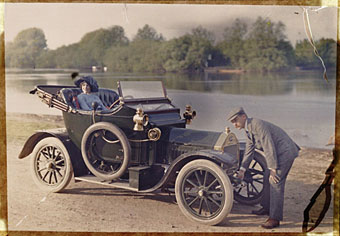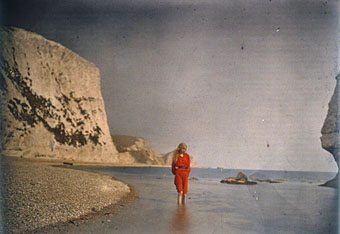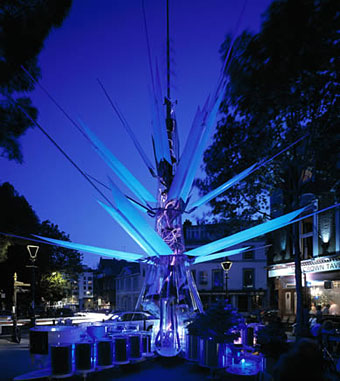BLDGBLOG: The Book
From web to print.
The Dawn of the Autochrome
Young couple with motor car, c.1910. Photographer unknown.
An exhibition of extraordinary Edwardian colour photographs opens today at the National Media Museum, London Bradford.
This exhibition will open on the 25th May. Marking one hundred years of the first practical process for colour photography—the Autochrome, invented by the Lumiere brothers—the National Media Museum presents a major summer show on what has been described as “perhaps the most beautiful of all the photographic processes”.
Today, we take colour photography for granted. Yet, for many years colour photographs remained an elusive dream. One hundred years ago, the dream became a reality when the first fully practical method of colour photography appeared—the Autochrome process.
The Dawn of Colour celebrates centenary of the Autochrome and the birth of colour photography. It reveals the Edwardian world as you have probably never seen it before—in full, vibrant colour. The past isn’t always in black and white.
The photographer’s daughter Christina at Lulworth cove,
Dorset in 1913 by Mervyn O’Gorman.
Previously on { feuilleton }
• Fred Holland Day
• The Door in the Wall
• Edward Steichen
• Mark Twain and Nikola Tesla
The London Oasis
The London Oasis, first seen on Clerkenwell Green last summer, has been resurrected at the Chelsea Flower Show.
London Oasis opened on 19th June 2006 as a temporary structure on Clerkenwell Green.
Designed by architect Laurie Chetwood, the Oasis is a demonstration of sustainability and renewable energy working with architecture to provide a tranquil oasis for London.
The 12 metre high kinetic structure mimics the design of a growing flower: its photovoltaic “petals” open and close in response to the sun and the moon utilising daylight to generate power. This is supplemented by a hydrogen fuel cell and wind turbine to make it self-sufficient. It even uses rainwater it has collected for irrigation and cooling.
At the base, the Oasis has five “pods” inside which people are secluded from the noisy and polluted city surroundings, enjoying cleaner cooled air and relaxing sounds. There are also five further areas providing social rendezvous and venues for entertainment.
The Oasis is “smart” in that it interacts with the environment around it. It senses time, the weather and people, and responds accordingly. At night, it uses energy stored during the day to power a beacon in the form of a light show which responds to the movement of people around.
The Chronicles of Clovis and other sarcastic delights
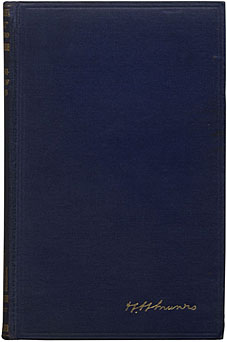
This week’s book purchase (yes, dear reader, it never ends, there are merely lulls between one indulgence of the vice and the next) is a small Bodley Head volume that comprises part of the collected works of Hector Hugh Munro (1870–1916), or “Saki” as he’s better known. I have Saki’s complete works already in a big fat Penguin collection but I like these small books that were the common format for portable reading prior to the invention of the paperback. Over a number of years I’ve managed to collect about half of the Tusitala Edition of Robert Louis Stevenson’s complete works which are similarly-sized blue volumes (one in a rare leather binding), simply through chance finds in secondhand shops.
This particular book is a 1929 reprint of The Chronicles of Clovis collection first published in 1911 and, like the Stevenson volumes, has the author’s signature blocked in gold on the cover. The introduction is by AA Milne and I’m taking the liberty of reproducing it in full below, partly out of laziness and partly because he does a good job of presenting the man and his work.
Continue reading “The Chronicles of Clovis and other sarcastic delights”
The art of John Austen, 1886–1948
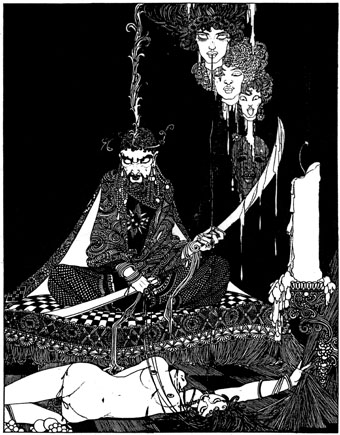
A few drawings by British illustrator John Austen (1886–1948), like Patten Wilson another artist whose work is hard to come by today. Austen was one of the many young illustrators over whom Aubrey Beardsley’s etiolated shadow fell from 1900 onwards and it’s the first ten years of Austen’s work I find most interesting, mainly because of the Beardsley stylings. He’s not as original or as elegant as Harry Clarke but he’s a lot better than the frequently overrated (yet interesting for other reasons) Hans Henning Voigt, or Alastair as he preferred to be known.

